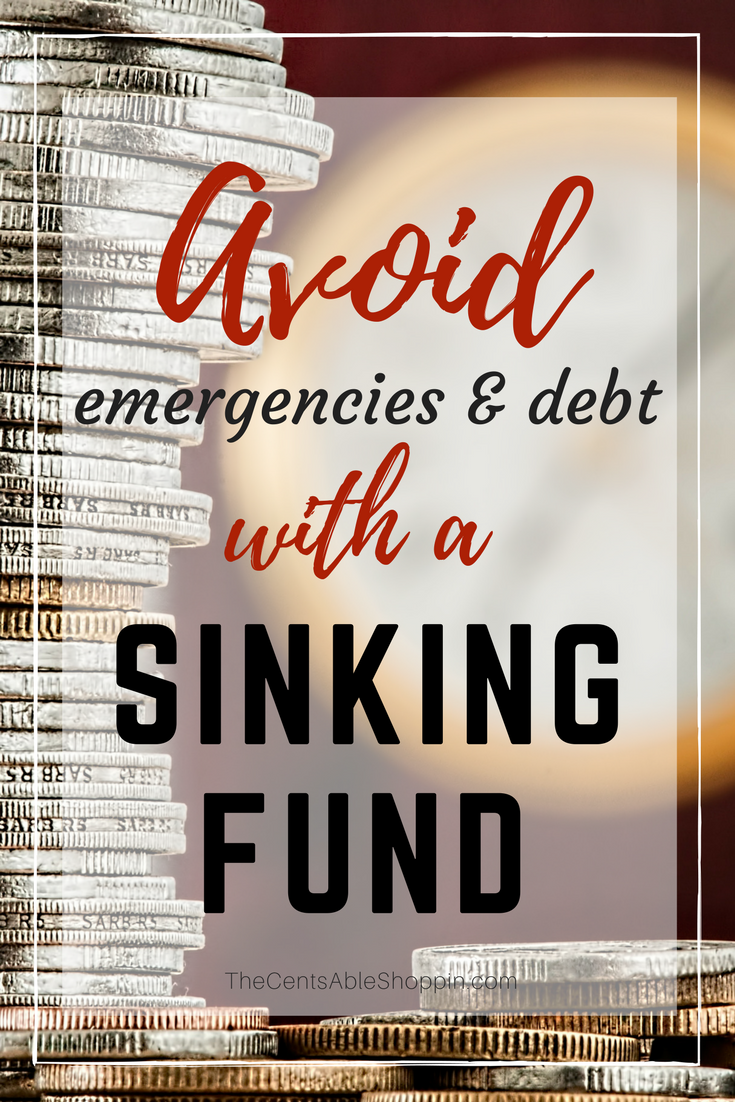A sinking fund is a great way to help you avoid emergencies and debt, while also allowing you to plan ahead to the future for wants and needs.

No matter if you use a budget to manage your money or you don’t, one thing is certain – we all have things that we will be paying over the course of the next year.
Whether it be car insurance, new tires for our vehicle, braces for our kids, or even Christmas purchases for our family, these expenses are all common for most families. While you can, in some cases, opt to pay your car insurance calculated as a monthly payment, sometimes being able to pay for your car insurance in one, six-month lump can be a tremendous feeling.
Many of these expenses – whether new tires, or Christmas, leave people turning to credit just to get by. So not only do you end up paying for the expense, eventually you’ll pay interest compounded over time.
Thankfully there are ways to plan for future purchases without having to rely on credit. It’s called a sinking fund. A sinking fund is when you set aside money each month, over time, to pay for future expenses.
How does a sinking fund work?
Despite the term “sinking fund”, a sinking fund won’t actually sink your budget. With a sinking fund, you are planning ahead for a known purchase.
For example: if it’s May, and you plan on picking up Christmas Gifts for family and friends, then you may want to save $100 each month from May to December in order to have a cash Christmas. If your auto insurance policy renews in August, then once you renew your current policy, start socking away money in your sinking fund so you are prepared for the next renewal – a $500 auto policy every six months requires you to put away $83 each month in anticipation of that bill.
You can realistically do this with any major purchase or bill. Sinking funds can realistically range from vehicle to travel, gifts, kids and home. We have a sinking fund for travel, another for kids summer break activities and another for vehicle expenses.
It’s such a blessing to be in control of your finances and plan for things that you know are inevitable.
In some ways, a sinking fund might seem like a savings account – after all, it’s money set aside for expenses that you may not want to pay for with a credit card. Right? In reality though, a sinking fund is different than a savings because it’s more specific.. You know how much you are putting in there and you have a plan for that allocated money.
Though you can keep your sinking fund in a savings account, it’s not always the best idea. You’ll want to make sure that your account doesn’t have a minimum balance fee. Some savings accounts limit the amount of transfers to and from the account.
Why not just use my emergency fund for these expenses?
An emergency fund is money that you set aside for unknown expenses. When you have an emergency fund, you tuck money away for something that may happen in the future. You may not know what lies ahead, but you are saving money for whatever that may be.
A sinking fund is different because you know what you are saving for and you have an appointed use for that money (car insurance premium, Christmas holiday shopping, etc). You can also use a sinking fund as a wish fund for something you want to save money towards. That could be a new craft table, or.. big screen television, a new sewing machine – the list could go on.
A sinking fund is for the known.
An emergency fund is for the unknown.
Where do you open a sinking fund?
If you plan on having a sinking fund for various expenses, it’s best to open up a savings account or a checking account for that sinking fund so you can easily get to the money. Although you can keep your sinking fund in envelopes in your home you have to make sure you resist the temptation to spend that money on other things.
Like pizza on a Friday night.
A simple savings account is a wonderful way to start putting away money in a sinking fund. You will want to make sure you opt for an institution that allows you the opportunity to access your money as needed and doesn’t nickel and dime you with fees.
A sinking fun can be an incredible concept that’s unbelievably simple. Despite its simplicity, it’s not something many people nail down. Unfortunately we are part of a culture that hasn’t mastered the art of patience. When we want something, we are more likely to buy now and place on credit than to take the opportunity to save over time.
When you learn how to have patience and plan your purchases in advance, then the worry of budgeting for a big purchase goes away. You are more in control of your finances.
Credit cards and banks count on those who don’t plan ahead of time. They are waiting to catch you at the most opportune time to slam you with fees and interest… your weakness is their success.
By learning how to save ahead of time, you will learn how to be in greater control of your finances.
Do you have a sinking fund? If not, have you considered one for future expenses?




Leave a Reply
You must be logged in to post a comment.